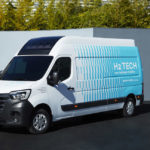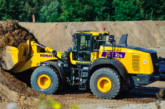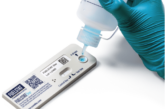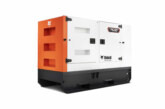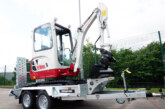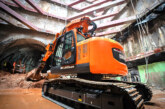HYVIA has further demonstrated its passion for a cleaner future, unveiling the Renault Master Van H2-TECH prototype alongside its Hydrogen Refuelling Station prototype as it looks to deploy its own entire hydrogen-based ecosystem, including green hydrogen production and distribution, and a range of fuel cell-powered light commercial vehicles.
“I am proud to unveil our first hydrogen prototypes. HYVIA, it’s about hydrogen mobility solutions for a tailor-made offer to our customers to meet the challenges of hydrogen mobility. HYVIA will be able to deploy its entire ecosystem in all territories and professional fleets for a carbon-free mobility. HYVIA is moving fast, bringing together the strengths and skills of two leaders: Renault Group & Plug Power.” – David Holderbach, CEO HYVIA
Renault Master Van H2-TECH prototype
Available from 2022, the all-new Master Van H2-TECH offers zero CO2 emissions*, increased range, and fast refueling time and is designed to transport goods and packages with ease thanks to its 12m3 cargo volume and a range of up to 310 miles (500km). Thanks to these attributes, the Master will easily meet the needs of businesses, large accounts, fleets, and local communities.
Today, hydrogen mobility is particularly useful for Light Commercial Vehicles: perfect for high loads and intensive use.
*When driving, neither CO2 nor other regulated air pollutants, in accordance with the WLTP certification.
Built in France
The Master Van H2-TECH is equipped with a 30kW fuel cell, 33kWh battery and four tanks containing 6kg of hydrogen combined and is produced entirely in France.
The van itself is built at Renault’s Batilly plant, while electric and hydrogen integration is completed by PVI, a Renault Group subsidiary based in Gretz-Armainvilliers. The electric motor is produced at the Cleon plant, while the fuel cell assembly will begin at the Flins plant by the end of 2021. The hydrogen tanks are sourced from Faurecia.
Hydrogen Refuelling Station prototype
HYVIA’s Hydrogen Refueling Stations will be available to purchase, lease or rent and are designed to meet and exceed all safety regulations and best practices, while allowing fast fueling times similar to ICE vehicles – just five minutes – to maximise vehicle availability.
The way the refuelling station operates is simple – hydrogen supplied will either be generated on-site using water electrolysis or supplied in bulk using gaseous tube trailers. The system then compresses H2 into storage, before dispensing it into the vehicle when needed.
The fuel stations will also be assembled at the Flins plant in Northern France.
Unique and complete HYVIA ecosystem
These prototypes are a first illustration of the HYVIA ecosystem, including green hydrogen production (electrolysers) and distribution (Hydrogen Refuelling Station), with a range of fuel cell-powered light commercial vehicles (Van, Chassis Cab and Citybus), that are complementary to battery electric vehicles.
More prototypes currently being worked on include the Master Chassis Cab H2-TECH: a large van with even more cargo space (19m3) and a range of around 155 miles (250km).
In addition, the Master Citybus H2-TECH is an urban minibus that can carry up to 15 passengers, ideal for businesses, municipalities, and local public services, with a range of 186 miles (300km).

